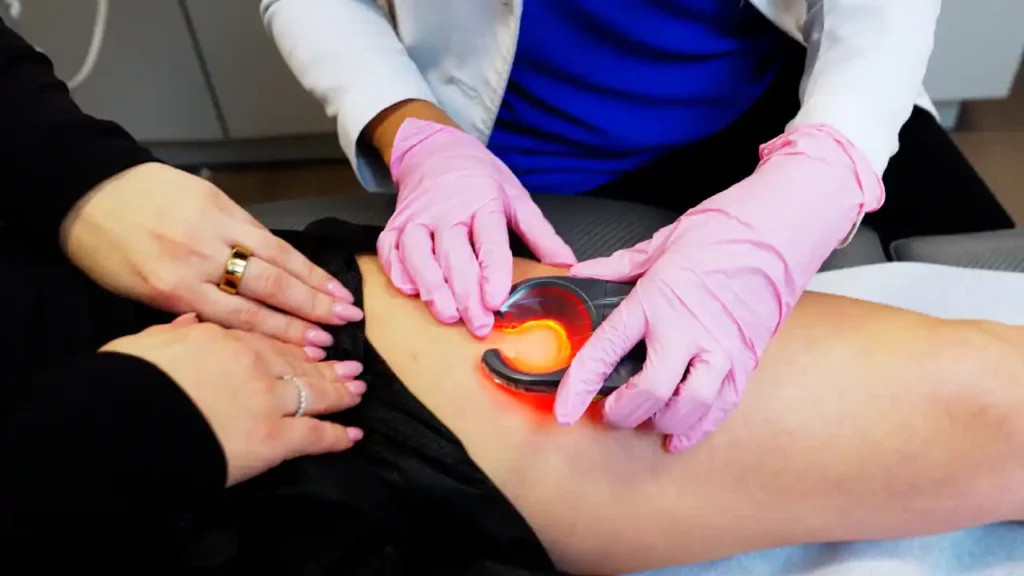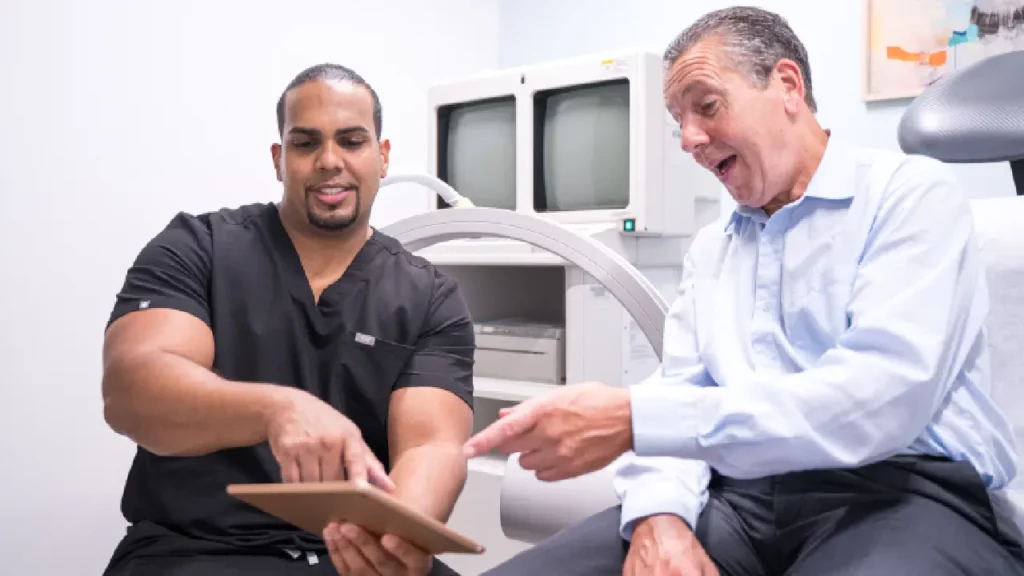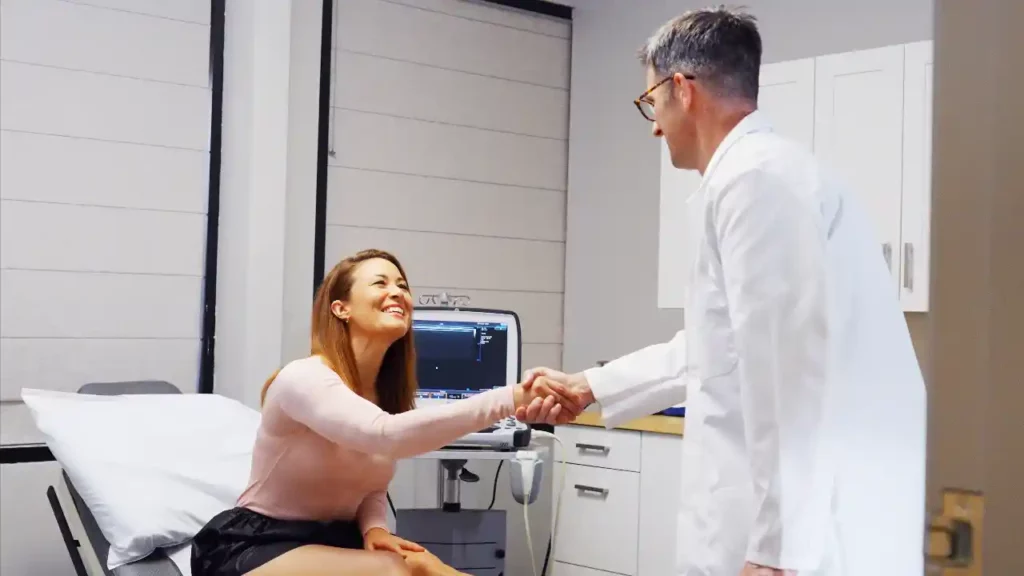Discover how to get rid of spider veins today!
You’ve probably tried to ignore or hide spider veins—but you don’t have to. Whether you’re looking for cosmetic improvements or relief from aching legs, now’s the time to act.
Get rid of spider veins with the right information, treatment options, and expert care. Whether you’re bothered by their appearance or experiencing discomfort, there’s good news—these veins are treatable.
This guide will walk you through the causes, symptoms, and professional solutions available. From home care tips to medical procedures, learn everything you need to know to make confident decisions about your health.
Why Do Spider Veins Appear on the Legs?
Spider veins form when tiny blood vessels near the skin surface become dilated due to pressure, aging, or weakened valves. They’re more likely to develop on the legs because of the pressure of standing and walking.
Common triggers include:
- Genetics and family history
- Hormonal changes
- Pregnancy or menopause
- Extended periods of sitting or standing
- Weight fluctuations or obesity
- Sun exposure over time
If you’re concerned about underlying conditions, check out our overview of vein diseases to better understand what might be contributing to your symptoms and how to manage them early.
What Are the Symptoms of Spider Veins?
You might notice clusters of red, purple, or blue veins on your thighs, calves, or ankles. While many see them as just cosmetic, they can cause discomfort.
Watch for these signs:
- Burning or itching sensation
- Aching legs, especially after long periods on your feet
- Mild swelling or heaviness
If you’ve been asking, “How do you get rid of spider veins?”, treatment may be your best option. Learn more about vein treatment options that can address both the appearance and the underlying causes of spider veins.
How to Get Rid of Spider Veins: 5 Effective Solutions
There’s no one-size-fits-all answer to how to get rid of spider veins, but these are the most common methods patients choose.
1. Sclerotherapy
A top option in spider veins treatment, sclerotherapy uses a fine needle to inject a solution that closes off the vein.
- Quick, in-office procedure
- No downtime
- Suitable for small-to-medium veins
- Results in 3–6 weeks
Visit our site to see before-and-after examples and learn if you’re a good candidate for this minimally invasive procedure.
2. Laser Therapy
Laser treatment uses focused light energy to collapse veins without any injections.
- Ideal for tiny or facial veins
- Short sessions with minimal discomfort
- Often requires multiple visits
This method also complements other spider veins on legs treatment approaches that might be part of your comprehensive care plan.
3. Radiofrequency Ablation (RFA)
For spider veins linked to deeper issues like venous insufficiency, RFA may be the answer. It uses heat to close off faulty veins.
- Minimally invasive
- Performed under local anesthesia
- Targets underlying vein problems
Learn more about how RFA might be what is the best treatment for venous insufficiency for your specific condition.
4. Compression Therapy
Though it doesn’t remove spider veins, compression stockings improve circulation and prevent worsening.
- Recommended before and after procedures
- Available in various strengths and styles
- Helps relieve leg fatigue and swelling
See our guide on how to treat spider veins to learn how compression can support your recovery and symptom management.
5. Lifestyle Changes
You can’t always prevent spider veins, but some habits help reduce risk.
Smart habits include:
- Regular low-impact exercise like walking
- Maintaining a healthy weight
- Elevating your legs daily
- Avoiding tight clothing around your waist or thighs
- Staying hydrated and limiting salt intake
These practices support vein health and can help you get rid of spider veins naturally before they worsen.
Can Spider Veins Go Away on Their Own?
Can spider veins go away without help? Not likely. Once visible, they usually remain until treated. However, early care and lifestyle changes can slow their progression.
While regular exercise, elevating your legs, and wearing compression stockings can help improve blood flow, they won’t eliminate spider veins once they’ve formed. These steps are useful for prevention or managing mild discomfort but are not curative.
Medical treatments like sclerotherapy and laser therapy offer more reliable, long-term solutions. These procedures directly target the affected veins, collapsing and fading them over time. That’s why a consultation with a vein specialist is often the most effective step toward truly resolving the issue.
More on that here: can spider veins go away.
How Are Spider Veins Diagnosed?
Diagnosis typically starts with a physical exam. In some cases, an ultrasound may be used to detect underlying vein issues.
- Non-invasive and painless
- Helps plan the best treatment
- Confirms whether you have superficial or deeper vein problems
An accurate diagnosis improves the success of your personalized spider veins treatment plan and helps avoid unnecessary procedures.
What to Expect During a Spider Vein Treatment Session
Treatments are usually fast and require no hospital stay.
Here’s what happens:
- The area is cleaned and prepped
- A solution or laser is applied to the affected veins
- The procedure lasts 20–45 minutes
Most patients walk out and resume normal activities the same day. You may need a few sessions depending on your needs. For a detailed walk-through, check our vein treatments section.
When Should You Consider Professional Vein Treatment?
If you’re wondering, how do you get rid of spider veins, here are signs it’s time to seek help:
- Veins are increasing in number or size
- You feel daily discomfort or heaviness
- You’re self-conscious about wearing shorts
- Home remedies haven’t worked
Find a nearby specialist using our locations directory, or book an appointment to get started with a customized care plan.
Benefits of Early Spider Vein Treatment
Treating spider veins early offers both cosmetic and health advantages.
You’ll benefit from:
- Faster recovery times
- Less extensive procedures
- Improved comfort and mobility
- Reduced risk of further complications
Taking the first step toward effective vein treatment is often the hardest, but it’s also the most rewarding. Learn more about your options at our vein treatments overview.
Effective options exist, and our vein specialists are here to help you every step of the way. Book an appointment today and discover how to get rid of spider veins with care that fits your lifestyle.









